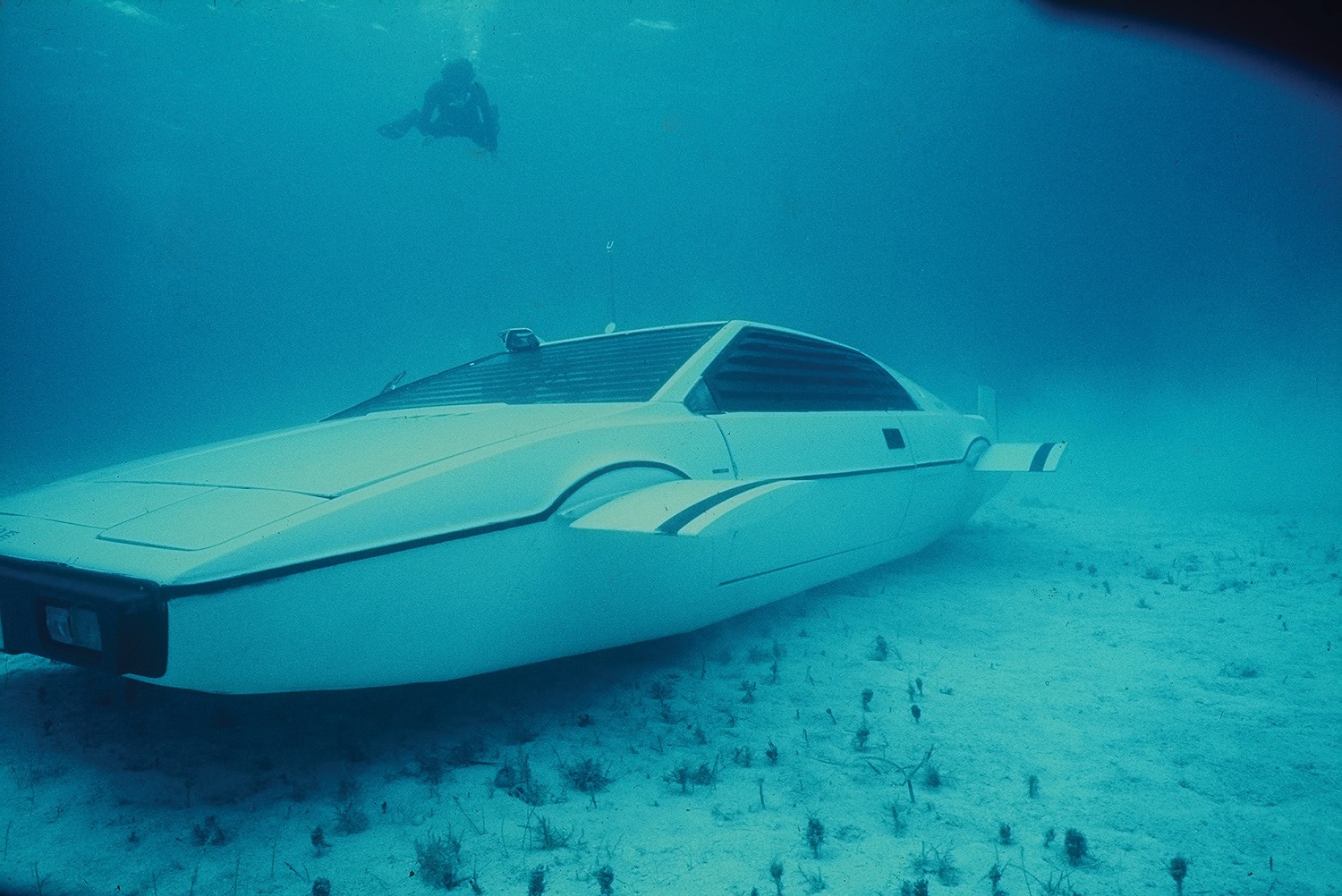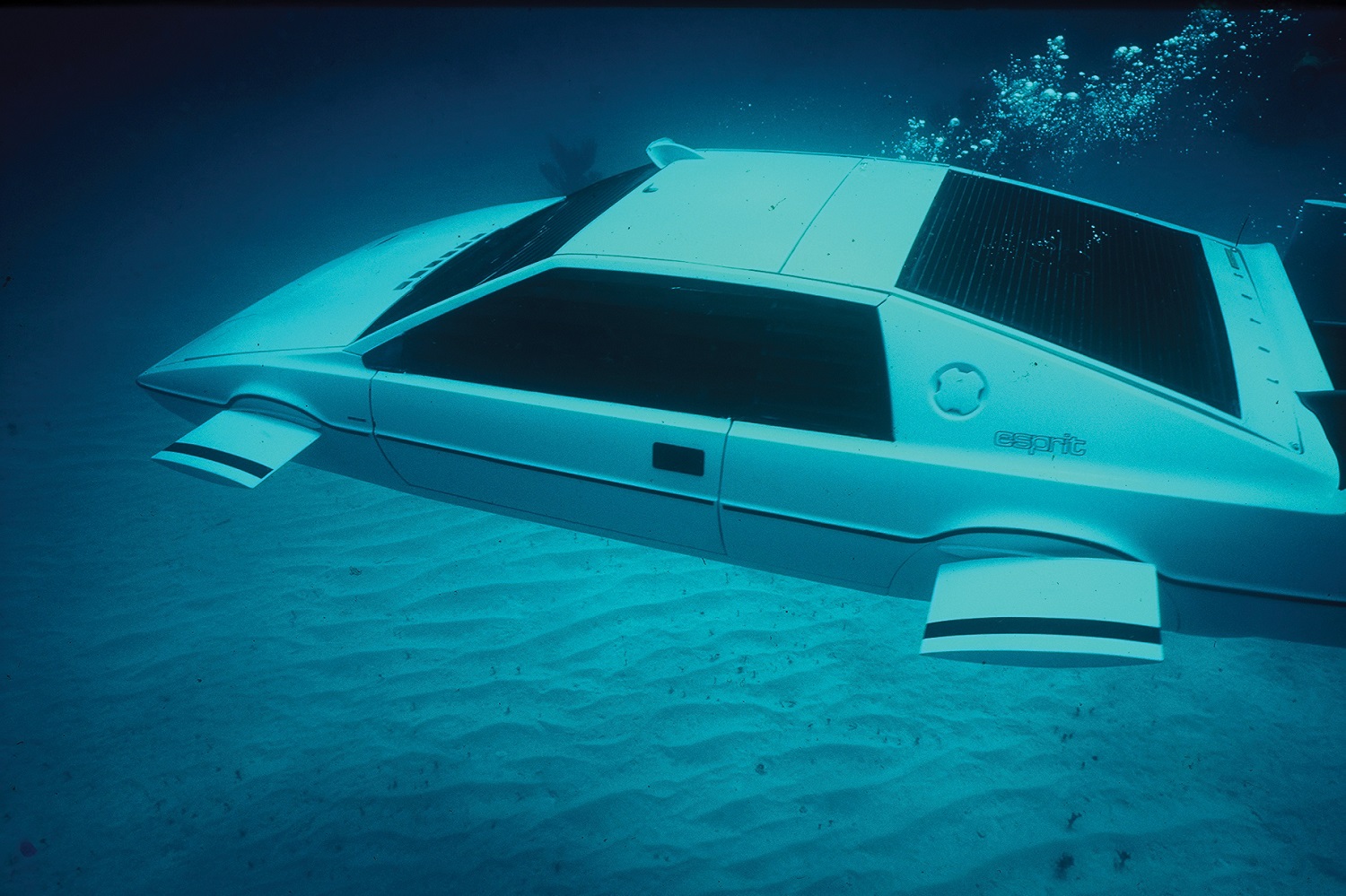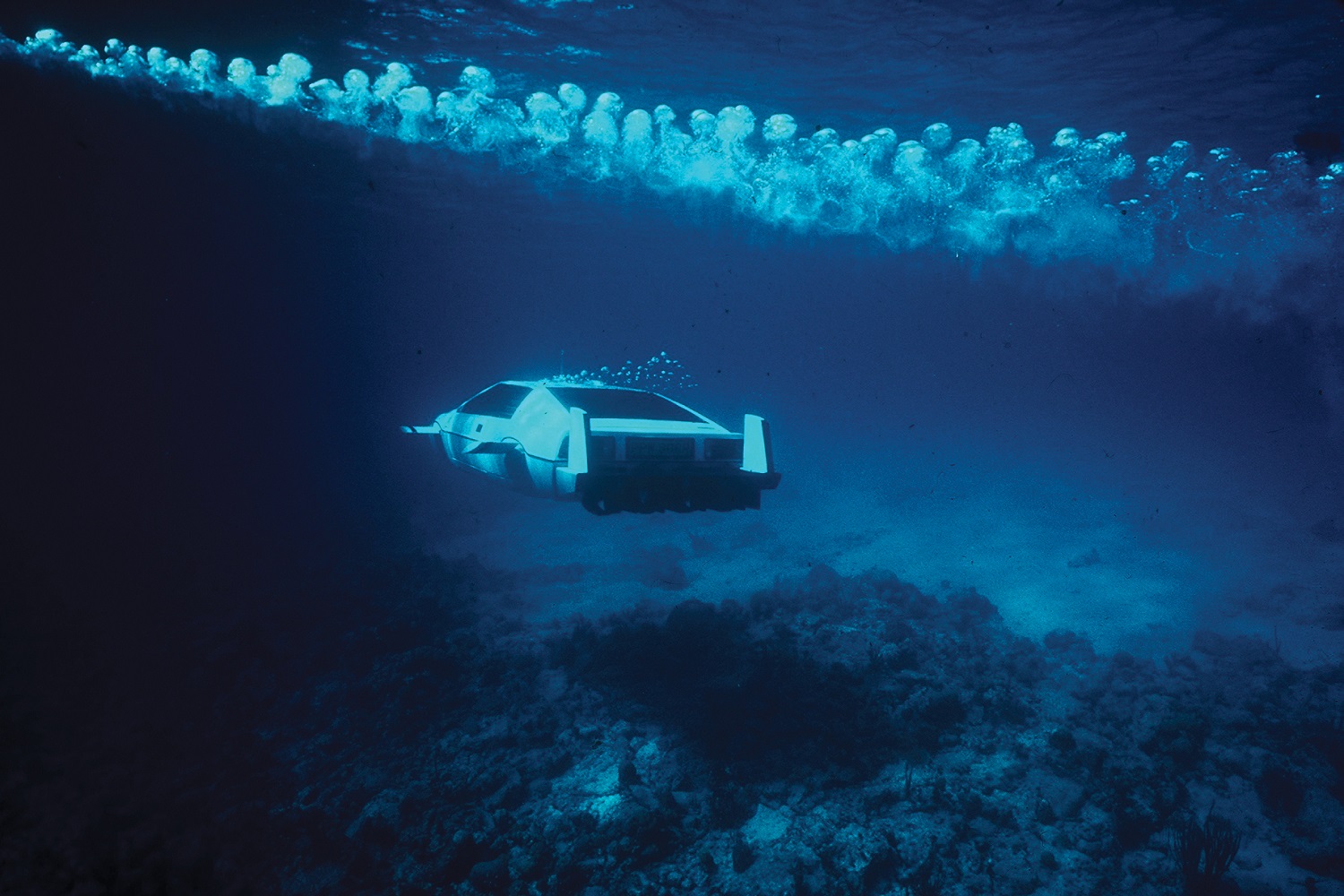Jaws dropped, eyeballs froze, and vocal cords fell silent when Tesla unveiled the Cybertruck in November 2019. While its specifications sheet is impressive, its polarizing design caught everyone’s attention and split every opinion. The California-based firm explained a classic British sports car turned into a submarine had an influence on the boxy lines, and it helped make the truck more aerodynamic than conventionally shaped rivals like the Ford F-150.
Company co-founder and CEO Elon Musk is more interested in the future than in the past, but there’s at least one vintage car in his garage. In 2013, he famously spent nearly $1 million on a 1976 Lotus Esprit that had been converted into a fully functional electric submarine (shown above) to star in the 1977 James Bond movie The Spy Who Loved Me. He originally planned to convert the car to Tesla power, but there’s little indication that has happened yet. The wedge-shaped coupe nonetheless became a source of inspiration when Musk and his team began rewriting the definition of a full-size pickup.
Cybertruck design influenced partly by The Spy Who Loved Me https://t.co/HKBzxFNfzm
— Elon Musk (@elonmusk) November 21, 2019
Boxy cars normally have the aerodynamic properties of a shoebox, but the angular Cybertruck isn’t a brick; it’s a doorstop. Musk’s beloved Esprit was, too, because it’s a shape that’s surprisingly slippery through air. Still writing on Twitter, Musk revealed his design team might achieve a 0.30 drag coefficient “with extreme effort.” That’s a term used to measure aerodynamism, and the lower the better. To add context, the Model 3 has a 0.23 drag coefficient, the Ram 1500 currently takes the top spot in the full-size truck segment with 0.35, and the Hummer H2 (remember those?) checked in at 0.57.
Musk didn’t detail what it will take to pull off a 0.30 drag coefficient, but he’s absolutely right when he says arriving at that number would be insane for a truck. His team might not have much of a choice: Making the model as aerodynamic as possible will play a significant role in helping Tesla keep its promise of building a pickup capable of driving for over 500 miles on a single charge. Cybertruck production is scheduled to begin in late 2021, so Musk’s team still has a little bit of time to figure it all out before it needs to lock the model’s design and move on to the next phase of the development process.






